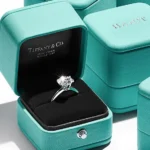In today’s digital marketing landscape, an abundance of metrics exists to measure various aspects of online activities. However, assessing brand performance remains a challenging task, often leading brands to overemphasize marketing efforts while neglecting the vital aspect of branding. Many marketers are enticed by positive metrics, but these often do not accurately reflect a brand’s true influence.
To address this issue, a solution comes in the form of a brand funnel, a valuable tool enabling brand managers to gauge brand growth effectively. This model offers a customer-centric perspective, tracking the market’s awareness and every step customers take toward brand loyalty and advocacy. By identifying where the brand excels and pinpointing areas that need improvement, brand managers can guide their strategies more effectively.
What Is a Brand Funnel?
A brand funnel serves as a roadmap of the customer journey, viewed from the customer’s perspective. It outlines the stages of awareness in the market and tracks each step a potential customer takes, progressing toward brand loyalty and eventually advocacy. This model enables brand managers to assess the brand’s performance and pinpoint crucial transition points that demand attention, aiming to guide as many customers as possible along the path toward advocacy.
Like any other funnel or customer journey mapping model, the brand funnel comprises various stages. Initially, it’s vital to comprehend how customers progress through these stages. However, the true value of the brand funnel lies in the analysis of where and why significant portions of customers fail to move from one stage to the next. This insight is key to understanding the customer journey comprehensively and making informed strategic decisions.
Stages of Customer Journey in Brand Funnel Model
The brand funnel comprises distinct stages, each representing a crucial phase in the customer journey:
- Awareness: This initial stage focuses on making potential customers aware of the brand’s existence.
- Consideration: At this point, customers are evaluating the brand against alternatives, contemplating its value and relevance.
- Preference: Customers develop a preference for the brand over competitors, indicating a deeper interest and connection.
- Purchase: The crucial stage where customers make their first transaction, signaling a level of trust and confidence in the brand.
- Loyalty: Post-purchase, customers continue to choose the brand, showcasing loyalty and repeat business.
- Advocacy: The ultimate stage where satisfied customers become brand advocates, promoting it willingly to others.
Understanding the customer’s journey through these stages is fundamental. However, the brand funnel’s real power lies in its ability to highlight bottlenecks where a significant number of customers fail to progress from one stage to the next. This analysis provides valuable insights, enabling brand managers to address these hurdles effectively and guide customers seamlessly through the journey.
By employing the brand funnel and delving into each stage, brands can gain profound insights into customer behavior, allowing them to refine their strategies and enhance brand loyalty and advocacy.
Awareness
Awareness in the context of your brand signifies the percentage of individuals in the market who can recognize your brand name when prompted. Essentially, it measures how many people have heard of your brand and compares this number with your competitors or the overall market size. The effectiveness of your marketing strategy significantly impacts your brand’s awareness. The larger the number or market percentage you capture in this stage of your funnel, the more competitively positioned you become in your market.
Consideration
The consideration stage of the brand funnel assesses the number of people, or the percentage of those aware of your brand, who would genuinely contemplate making a purchase. At this stage, only brands offering compelling propositions aligned with and capable of fulfilling the target market’s objectives are taken into consideration.
Preference
Brand preference within your chosen market measures how your brand stands against its leading competitors as the preferred choice. While it doesn’t directly translate into actual purchases, it serves as a valuable gauge to assess your brand’s perception and the likelihood of purchase during the decision-making process.
Purchase
The purchase stage of the brand funnel is straightforward – it represents the individuals who have actually bought the brand’s products at least once. These consumers have evaluated all available options in the market and have made the crucial decision to overlook competitors and proceed with a purchase.
Loyalty
Brand loyalty signifies the measurement of individuals who have not only made an initial purchase but also engaged in repeat purchases. Essentially, this group of people has demonstrated a positive experience with the brand, compelling them to make multiple purchases. The frequency of these repeat purchases serves as an indicator of the level of brand loyalty achieved.
Advocacy
In the final stage of the brand funnel, which is the pinnacle of branding, we encounter brand advocacy. This phase quantifies the number of people willing to recommend the brand to others based on their own positive experiences. It gauges the extent to which the brand fulfills its promises and aids customers in achieving their objectives.
Marketing Funnel vs Brand Funnel
In the realm of business, various types of funnels exist, with sales and marketing funnels being among the most recognized. While these funnels track customer journeys and transitions from one stage to the next based on specific metrics, they primarily focus on real-time statistics related to traffic and sales. However, they lack the ability to depict the brand’s perception in the market.
On the contrary, the brand funnel delves into the brand’s market perception, evaluating awareness levels, preference over competitors, and the likelihood of customer recommendations. Unlike sales and marketing funnels, brand funnels offer a comprehensive view of the brand’s standing in the market, providing valuable metrics for brand managers and leaders to assess their brand’s health.
How to Create an Effective Brand Funnel
Developing a brand funnel offers more than just a visually appealing representation. It serves as a strategic tool, offering brand leaders insights into the customer journey. By identifying the stages where customers face challenges transitioning, brand funnels guide efforts to facilitate these transitions. The ultimate goal is to move as many customers as possible towards brand advocacy, making the brand funnel an invaluable tool for brand analysis and strategic planning.
Step 1: Initial Awareness
Creating an effective brand funnel begins with the challenge of guiding individuals into the funnel itself. This initial step involves launching a brand awareness campaign as part of the overall marketing strategy. The objective is to introduce the brand, its content, and products to the market, capturing attention and generating awareness. This concerted effort ensures that the brand name becomes familiar to the intended audience, laying the foundation for subsequent stages.
Step 2: Awareness to Consideration
Once a brand achieves awareness, it must progress to the next stage: consideration. While being known is vital, the brand must now position itself as a viable choice for the consumers who are aware of its existence. It’s not merely about reaching a broad audience; it’s about targeting the right people. Brands need to move beyond generic awareness and focus on those who genuinely want or need what they offer. This transition necessitates a targeted approach, ensuring that the brand resonates with the exact audience it intends to serve.
Step 3: Consideration of Preference
In the competitive landscape, being considered is not enough; the brand must become the preferred choice. This step involves direct comparison with competitors. The way the offer is presented, the brand’s tone, personality, and emotional connections with the audience are pivotal. To rise as the preferred brand, the messaging must be compelling, creating a lasting impression and resonating with the audience’s preferences and values.
Step 4: Preference to Purchase
When a brand becomes the preferred choice, it enters the prime position for potential sales. However, being the preferred choice doesn’t guarantee an immediate purchase; it represents a preference. People’s readiness to buy varies based on numerous factors related to the specific product or service category. At this stage, maintaining brand salience is crucial. Whether through strategic email sequences or remarketing efforts, providing consistent value and staying visible to customers are paramount. By staying top of mind, the brand ensures that when the time to make a purchase decision arrives, it remains the natural and preferred choice, ultimately sealing the deal.
Step 5: Purchase to Loyalty
After a customer makes a purchase, the effectiveness of the product or service in fulfilling its promise becomes crucial. However, delivering on the promised outcome alone may not secure brand loyalty. The entire end-to-end experience, from the checkout process to delivery wait times, and ongoing communication, along with customer support, all contribute to transforming buyers into loyal advocates.
Step 6: Loyalty to Advocacy
In the brand funnel, each stage involves progressively warmer customers or prospects. For instance, a prospect considering your brand is warmer than one who is simply aware of it. Similarly, a customer making a repeat purchase is warmer than one who has made a single purchase. When a customer not only makes multiple purchases but demonstrates a willingness to return, they are on the verge of becoming brand advocates. These satisfied customers are more likely to share their positive experiences with others. Brands can facilitate this process by implementing a brand advocacy program, maintaining clear communication, and offering incentives.
Final Thoughts on Brand Funnel
Building a brand extends far beyond the realms of sales and marketing. Sales and marketing efforts lack significance without a strong focus on brand development. While numerous tools exist to measure marketing metrics, evaluating brand performance is often challenging. The brand funnel serves as a valuable tool for brand leaders, enabling them to assess their brand’s market health, gauge brand performance, and establish a systematic approach to guide cold prospects toward becoming enthusiastic brand advocates.






![What is Branding? [Easy Guide]](https://naumandigital.com/wp-content/uploads/2023/02/Logo_design_branding-1-600x400.jpg)
![The Common Person/Everyman Archetype [Explained with Examples]](https://naumandigital.com/wp-content/uploads/2023/10/WhatsApp-Image-2023-10-14-at-2.21.15-PM-600x400.jpeg)

![Why are Logos Getting Simpler? [Explained]](https://naumandigital.com/wp-content/uploads/2023/10/Whatisasimplelogodesign-600x400.jpg)